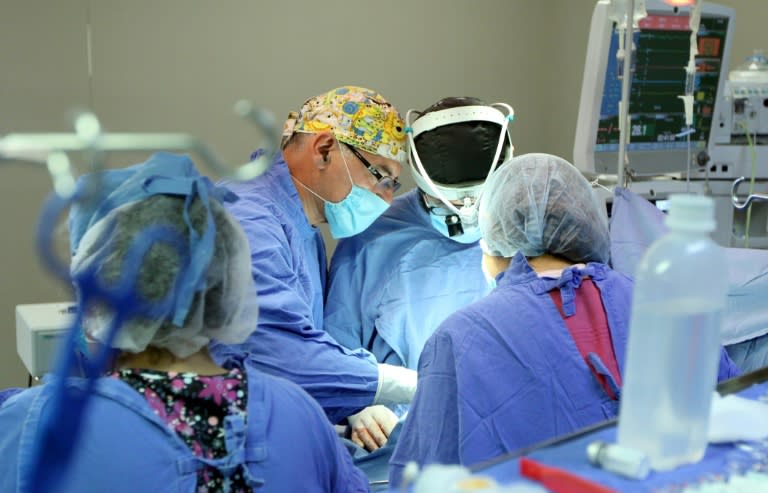Steady hand: how to do open-heart surgery in a quake
When the ground started shaking in Mexico City on September 19, many people ran out into the street. Not David Arellano. In the middle of performing open-heart surgery on a newborn, the pediatric surgeon just concentrated harder. "The shaking was very violent, very intense. We had to hold down our equipment in the operating room," he said of his experience during the 7.1-magnitude earthquake that hit Mexico a month ago, killing 369 people. Arellano, 57, knows a thing or two about working under pressure. He was also in open-heart surgery when a previous earthquake hit on September 7, and managed to save the life of his nine-year-old patient despite the violent shaking. The second earthquake hit Mexico City even harder, causing 39 buildings to collapse -- including one across the street from Arellano's hospital. He watched as it came crashing to the ground in an enormous cloud of dust. Then he got back to work operating the apparatus keeping his patient's blood flowing. "If you let yourself panic, you'll probably do something stupid. It helped knowing we had a patient connected to a machine" that her life depended upon, he told AFP in his office at the La Raza Medical Center, a public hospital. Video footage from the operating theater that day shows Arellano and his team bracing themselves and the table where their tiny patient lies, their calm literally unshakeable despite the tremors pitching the room back and forth. Arellano performs seven to eight operations a week. He says he has to go in prepared for every possibility, including an earthquake -- something Mexicans, who live atop five tectonic plates, are all too used to. His hospital's earthquake protocol is to evacuate the first two floors. From the third floor up, people are supposed to stay inside and gather at designated meeting points. But the seventh-floor operating room is another story: everyone has to stay exactly where they are. "Shaking or not, these patients are depending on extracorporeal circulation (with a machine) to stay alive. And keeping the machine working depends on the people in the room," he said. - Control your fear - Arellano's second priority that day was to talk to the newborn's parents and reassure them everything was fine -- just as he did on September 7 with his nine-year-old patient's father, Ricardo Garduno. "We were already a nervous wreck because of the operation. It had been five hours and we had no news. Then this powerful earthquake hit. But the worst part was not knowing how she was doing," said Garduno, 34. He remembers the relief that washed over him when Arellano came out after the quake and told him, "Everything went fine." "The fact they remained so calm and professional, I find that very admirable," Garduno said, unable to contain his smile knowing that his daughter is due to be released soon with a clean bill of health. The newborn girl's mother was equally touched. "They just kept operating. They never left," she told Mexican media. Her baby came through surgery fine, but is still under observation for congenital heart defects. Arellano learned the value of keeping a cool head 32 years ago when, fresh out of medical school, he lived through the worst earthquake in Mexican history. That quake -- which, improbably, also struck on September 19 -- killed more than 10,000 people. He was a resident at the time at Mexico General Hospital, where dozens of people were killed, including several of his colleagues. "What I learned that day is that you have to control your panic, because it can kill you," he said. He recalls he was working that day in an annex of the hospital. He walked out as calmly as he could. Other residents who ran reached the main building first -- and were crushed when it came crashing down. "A lot of my colleagues probably would have made it out alive if they hadn't panicked," he said.



